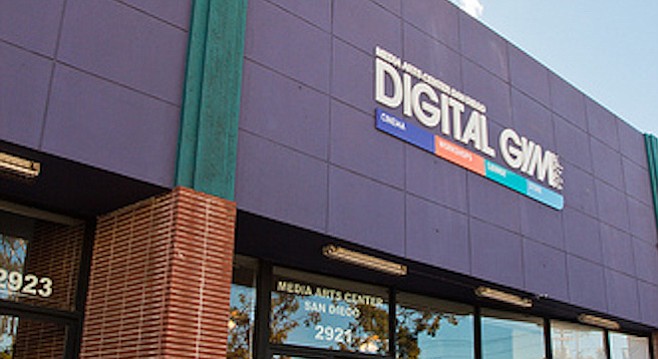 Facebook
Facebook
 X
X
 Instagram
Instagram
 TikTok
TikTok
 Youtube
Youtube

Second-run theatres appear to have gone the way of video cassettes. The once popular “dollar houses” offered audiences a chance to catch big releases on their way to home video, generally at a cost of $3 or less.
Many a Thursday night was once spent at the corner newsstand, waiting for the Tribune truck to drop a bundle of Friday’s newspapers to give me a jump on that weekend’s viewing choices. Before VHS, DVD, and VOD turned American living rooms into screening alcoves, big titles would hold their premieres in a first-run theatre centrally located in a city’s downtown area. A picture like The Godfather would debut in a 3000-seat urban-picture palace and play for months before opening wide on neighborhood screens.
Then came the sub-run. After a film had all but played itself out, distributors would stick it on a double-bill — generally paired with whatever print happened to be lying around the 35mm exchange— and ship it to smaller second-run houses. New copies were never struck for discounted runs. By the time first-run prints hit budget theatres, most appeared to have been dragged through Singer sewing machines by stone-blind projectionists schooled in the art of punch-press operation.
Certain titles (Cold Turkey, The Long Goodbye, Where’s Poppa?, Blazing Saddles, and anything by Woody Allen) qualified as anytime, anywhere entertainments. Wherever they screened — hardtops, drive-ins, 16mm college auditoriums — you’d find me seated fourth row, center. There were enough splices in the print of Poppa that played the Parkway Theatre that the running time clocked in minus six minutes. The Eastmancolor prints of Woody Allen’s Bananas had so many emulsion scratches they appeared to have been shot through prison bars.
One visit to the old UltraStar Chula Vista, and it became deafeningly clear that the only thing cheaper than the ticket price was the clientele. It was the only theatre in town that stopped just short of lining their concession shelves with bullhorns and laser pointers to encourage audience participation. When AMC took over the lease, with it went San Diego’s last second-run house.
Though far from what one might consider a second-run house — the floors aren’t sticky enough and the stench of 100-proof urine doesn’t cloud the air — the Digital Gym appears to be keeping the spirit of extended-run exhibition alive.
None of the local chains — not Landmark, not the Angelika, and certainly not AMC — come close to matching the taste and daring of Digital Gym programmer Moises Esparza. Of late, Moises has taken to booking a series of “last chance indies,” films that had previously played a week or two at another venue (Art Bastard, Wiener-Dog), giving city dwellers too lazy to make the trek to Carmel Mountain a second chance at a theatrical viewing.
Starting Friday: Swiss Army Man, a film I missed during its original run. Just another excuse, as if one’s needed, to visit the Digital Gym.


Second-run theatres appear to have gone the way of video cassettes. The once popular “dollar houses” offered audiences a chance to catch big releases on their way to home video, generally at a cost of $3 or less.
Many a Thursday night was once spent at the corner newsstand, waiting for the Tribune truck to drop a bundle of Friday’s newspapers to give me a jump on that weekend’s viewing choices. Before VHS, DVD, and VOD turned American living rooms into screening alcoves, big titles would hold their premieres in a first-run theatre centrally located in a city’s downtown area. A picture like The Godfather would debut in a 3000-seat urban-picture palace and play for months before opening wide on neighborhood screens.
Then came the sub-run. After a film had all but played itself out, distributors would stick it on a double-bill — generally paired with whatever print happened to be lying around the 35mm exchange— and ship it to smaller second-run houses. New copies were never struck for discounted runs. By the time first-run prints hit budget theatres, most appeared to have been dragged through Singer sewing machines by stone-blind projectionists schooled in the art of punch-press operation.
Certain titles (Cold Turkey, The Long Goodbye, Where’s Poppa?, Blazing Saddles, and anything by Woody Allen) qualified as anytime, anywhere entertainments. Wherever they screened — hardtops, drive-ins, 16mm college auditoriums — you’d find me seated fourth row, center. There were enough splices in the print of Poppa that played the Parkway Theatre that the running time clocked in minus six minutes. The Eastmancolor prints of Woody Allen’s Bananas had so many emulsion scratches they appeared to have been shot through prison bars.
One visit to the old UltraStar Chula Vista, and it became deafeningly clear that the only thing cheaper than the ticket price was the clientele. It was the only theatre in town that stopped just short of lining their concession shelves with bullhorns and laser pointers to encourage audience participation. When AMC took over the lease, with it went San Diego’s last second-run house.
Though far from what one might consider a second-run house — the floors aren’t sticky enough and the stench of 100-proof urine doesn’t cloud the air — the Digital Gym appears to be keeping the spirit of extended-run exhibition alive.
None of the local chains — not Landmark, not the Angelika, and certainly not AMC — come close to matching the taste and daring of Digital Gym programmer Moises Esparza. Of late, Moises has taken to booking a series of “last chance indies,” films that had previously played a week or two at another venue (Art Bastard, Wiener-Dog), giving city dwellers too lazy to make the trek to Carmel Mountain a second chance at a theatrical viewing.
Starting Friday: Swiss Army Man, a film I missed during its original run. Just another excuse, as if one’s needed, to visit the Digital Gym.
Comments